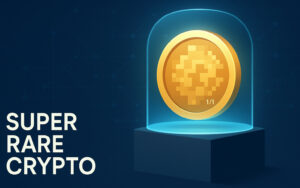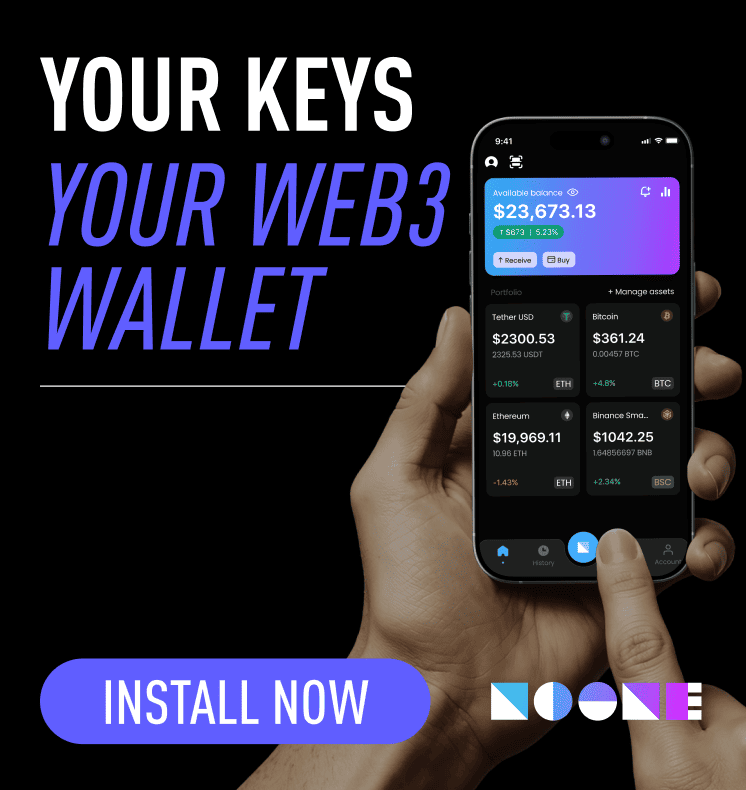Introduction
Super rare crypto assets are crypto tokens, coins, or collectibles that are scarce from design or circumstance and for which numerous collectors or investors value that extreme scarceness. You observe this principle with low-supply tokens, one-of-one non-fungible tokens (NFTs), or on-chain works commemorating historical events. In this article, I outline what makes crypto “super rare,” why people are so passionate, how the scarceness is constructed and verified, and whence they are found, as well as practical next steps for any interested individual.

Super Rare Crypto
What the term “super rare crypto” entails practically
It all comes down to low supply and strong demand. That low supply might appear as an utterly tiny total token count, as with one-of-one NFT, or as scarce few coins with distinctive provenance. Take the digital analogue of a scarce strip of postage or baseball card. Rarity might also be quantitative — as with 1,000 tokens total — or qualitative — as with the very first token printed from an identifiable project.
Rarity has a backstory: an original mint, an influential owner, or history with a defining crypto moment. That narrative can carry as much weight as the numbers. For collectors, the narrative instills meaning with the item. For traders, it can provide perceived value. Either way, the unification of proof on-chain and narrative fuels interest.
Since the blockchain documents ownership and provenance, rarity comes alive and can be substantiated in ways that paper items never could. That substantiability is one of the reasons digital rarity has been accepted with confidence by collectors and investors.
Why communities and markets are interested in rarity
Rarity creates a center of gravity for a community. Enthusiasm congregates around rare mints, unites for scholarship, and exchanges data on provenance and authenticity. Communities form for miniscule, rare projects for which each owner will feel he or she has a stake. That can increase participation and sustain projects through initial upheaval.
From the point of view of markets, scarcity usually means liquidity concentration. A few holders can control the supply, so price swings can be steep. That creates both potential for profit on the upside and risk. When one owner makes up his mind to sell, the market tends to react sharply.
Lastly, rarity impacts perception. A coin with historical interest or an unusual characteristic has the potential of becoming a cultural icon. Cultural value is difficult to forecast, yet if it materializes, it can have significant impact.
How token scarcity is created — tokenomics and technical design
Some projects set hard token caps at the start. A token contract has the ability to set a hard cap of 10,000 or as low as 1 token. That’s a simple way of creating scarcity. Other projects set rarity through mechanics — burning tokens, time-locked inventories, or slow reveals. They all make scarcity act differently with time.
Non-fungible tokens also bring with them rarity with the offering of unique metadata, art, or traits for every item. For most NFT platforms, not many items have rare traits algorithmically at the time of minting. Rarity here is technical and statistical: certain combinations of traits are much rarer.
Technical design also comes into play for verification. Protocols such as ERC-721 and ERC-1155 have metadata and provenance hooks which allow for a token’s ownership and origin to become trackable. That helps make it easier to establish that something is actually scarce and not misrepresented.
A very brief history and some examples
Rare digital assets have their origins from first digital collectible and colored coin trials. Bitcoin’s first days of life delivered rare on-chain assets like first block address values, and those are still desired by specific collectors. As long as blockchains further developed, platforms like Ethereum pioneered artist-controlled NFTs, and those instigated rarity mainstream.
Standout examples range from the very initial NFTs made from an identifiable artist, to very low-supply governance tokens, all the way to on-chain records of historical events. Some initial NFT drops ended up becoming eras of time, while some token launches with very low caps enticed speculative traders wagering on demand surges.
Over time, marketplaces, wallets, and platforms for analytics have been developed to facilitate discovery and verification. They allow collectors to find the scarce assets and their provenance and aid building of a healthy ecosystem for rarity.
Where to look for extremely rare crypto — marketplaces and platforms
Marketplaces are the first stop. NFT markets like OpenSea, Magic Eden, and other chain-specific platforms maintain registries of scarce items with clear supply counts and verifiable ownership history. For low-supply tokens, centralized and decentralized exchanges will register transactions, but more likely the transaction will take place on over-the-counter trades or off-market transactions.
Rarity indexes and expert discovery tools allow you to uncover goods that are rare in their allocation of characteristics or are scarce. These tools grade goods and show previous sales, so you get to see how markets view different levels of rarity. Community channels, drop curation, and project sites are also primary sources.
Finally, auction houses and provenance registries are applicable for extremely rare pieces. Auction houses and trusted registries offer greater assurance and appeal to a different group of buyers than open markets do.
Risks and how to address them responsibly
Rarity does not mean value. A rare token with zero community, zero utility, and zero cultural significance can still not maintain value. Liquidity risk exists and is very much real — the rarer an asset, the fewer buyers there are. That can make it difficult to unload at the intended price point.
Frauds and misrepresentation are not impossible. Fake metadata, stolen paintings, or tokens marketed as one-of-a-kind if they are not can trick buyers. Always verify on-chain records, contract addresses, and ownership history. Ask who created the token and if there is any record that can be verified.
Treat your rare crypto as any speculative collectible. Research, set your limits, and question yourself if your interest has anything to do with passion for the asset or short-term profit. Buying for long-term enjoyment, the sentimental return can very well justify the purchase price if the market goes down.
How to buy, store, and confirm super rare crypto
Start with verifying the contract address or the public profile of the maker. For NFTs, ensure the collection contract is genuine and token ID matches the maker’s records. For low-supply tokens, confirm the supply limit and token contract on-chain. Utilize block explorers and genuine discovery platforms.
Store your scarce assets safely in secure wallets that use the token standard that you need. For valuable assets, keep hardware wallets and seed phrase backup stores. Consider multi-signature setups if keeping assets on behalf of a group or if wanting an additional level of security.
Finally, document provenance and receipts. Take screenshots of listings, keep transaction hashes, and have records of any communications with sellers. That paper trail helps if ever you resell, transfer, or need to prove authenticity.
Conclusion
Super rare crypto includes the entire range of scarce digital assets — from tiny token supplies to one-of-its-kind NFTs and historical on-chain products. Rarity can construct cultural value, community attention, and price potential, but also risks liquidity and legitimacy. Make thorough checks on contract data, history, and ownership if interested, and regard the assets as collectibles with an emotional and monetary side. Proper care will turn rare crypto into a satisfying possession and field of study, for the story or the market alike.














 Twitter
Twitter
 Telegram
Telegram
